“What if every decision you’ve ever made exists in an alternate version of the universe, playing out parallel to your life?” This isn’t the plot of a sci-fi blockbuster; it’s an evolving field of scientific theory that’s inching closer to being more than mere speculation. For decades, luminaries like Hugh Everett III, the father of the Many-Worlds Interpretation, have posited alternate realities splitting off at every quantum fork. More recently, minds like Max Tegmark and science communicator Neil deGrasse Tyson have debated multiverse theory’s impact on everything from physics to philosophy. But here’s the kicker: the next leap toward proving—or disproving—these parallel dimensions may come not from a telescope or a particle collider, but through artificial intelligence (AI). Mind-blowing, right?
For years, we’ve been teased by the tantalizing concept of the multiverse in popular narratives and scientific models alike. Theoretical physics dangles the carrot, suggesting quantum mechanics and string theory imply that infinite realities might sit side-by-side with ours. Yet proving their existence has remained infuriatingly elusive, a mix of science and an almost religious act of faith. Enter AI. With its unparalleled ability to churn through staggering volumes of data, coupled with the rise of quantum computing, the toolkit for unraveling this mystery is being thrust into the hands of machines. The convergence of groundbreaking physics and advanced AI may provide the first actionable evidence of these universes—or not. Either way, we’re rewriting what humans thought was possible. By the time you finish this article, you may find yourself questioning the very fabric of reality—and even your own.
1. Multiverse Basics – What Do We Know So Far?
1.1 The Multiverse Theory Overview
To understand the role AI might play, it’s critical to first grasp what the multiverse theory entails, without lapsing into the arcane jargon that often cloaks advanced physics. At its core, the multiverse theory suggests our universe isn’t the only game in town. Instead, there could be countless other universes—some nearly identical to ours, others drastically different. While this might sound outlandish, its plausibility stems from several scientific frameworks.
One of the earliest formulations arose from quantum mechanics, especially Hugh Everett III's Many-Worlds Interpretation, which argues that every quantum event creates distinct branches of reality. Imagine flipping a coin: the moment it lands on heads in one universe, another branch spawns where it lands tails. This isn’t a whimsical “what if”; it’s a mathematically consistent explanation for quantum superposition. Cosmology ups the ante with the inflationary multiverse, where the early, rapid expansion of the universe could have spawned countless “bubble universes”—each with its own rules of physics.
Even more structured is Max Tegmark’s classification of the multiverse, dividing it into four levels. From Level 1, rooted in observable patterns, to Level 4, which imagines entirely different physical laws, his work offers a taxonomy of how these other dimensions might exist. But let’s be real—while these ideas are elegant, they haven’t yet crossed the bridge from theoretical beauty to empirical hard science.
1.2 Evidence and Counterarguments
Okay, so where’s the proof? So far, evidence for the multiverse has been subtle, indirect, and maddeningly inconclusive. Supporters often point to the concept of “fine-tuning” within our universe. For example, if fundamental constants like gravity’s strength or the electron’s mass were even slightly different, life as we know it wouldn’t exist. This miraculous precision seems less miraculous if there are infinitely many universes—ours just happens to be the one where life emerged. Additionally, some argue that irregularities in cosmic microwave background radiation (CMB) could hint at interactions between our universe and others during their birth throes, though this is hotly debated.
Yet criticisms abound, even from within the scientific community. Nobel Prize-winning physicist Roger Penrose posits that many concepts of the multiverse edge dangerously close to metaphysics, rendering them unfalsifiable and hence unscientific. Others deride multiverse theories as intellectual cop-outs—an attempt to avoid addressing why our universe exists as it does without offering testable hypotheses. Simply put, detractors argue that until multiverse frameworks yield measurable, repeatable data, they’re more akin to philosophy than physics.
1.3 Importance of "Proof"
Why does proving parallel universes even matter? For one, it could address some of humanity’s deepest existential questions. Are we alone in the cosmic expanse? Is there inherent meaning to our universe, or is its apparent design just a fluke in an infinite field of possibilities? Beyond philosophy, the stakes are practical too. Unearthing evidence of a multiverse could turbocharge advancements in quantum computing, encryption algorithms, and even energy sourcing. It might force us to rethink the laws of physics themselves, potentially sparking the next technological revolution. But proving it won’t be easy, and that’s precisely why AI might hold the key.
2. Quantum Mechanics: The Gateway to the Multiverse
2.1 Quantum Mechanics and Parallel Worlds
Let’s start with Schrödinger’s Cat, the most famous feline in physics. Imagine a cat locked in a box with a vial of poison that’s released if a radioactive atom decays. Quantum mechanics argues that until someone opens the box, the cat is both alive and dead. This bizarre notion—called superposition—is one of the cornerstones of quantum physics, and it suggests the possibility of parallel outcomes existing simultaneously. It’s like flipping a coin and having both heads and tails exist, but in different realities.
The Many-Worlds Interpretation (MWI) of quantum mechanics takes Schrödinger’s thought experiment a step further. It proposes that every quantum decision—a particle going left versus right, a photon being absorbed or not absorbed—creates a “branch” in reality. Each branch becomes a separate universe where all possibilities play out. Multiverse theory, in this sense, isn’t just science fiction. It’s woven into the fabric of quantum mechanics itself.
2.2 Decoding Quantum Data
Quantum mechanics gives us the keys to the multiverse, but here’s the catch: the data it produces is mind-bogglingly complex. At its core, quantum theory deals with particles operating in a probabilistic haze—it's messy, unpredictable, and hard to model. However, phenomena like quantum entanglement, where particles are intimately linked regardless of distance, offer tantalizing glimpses into relationships that might transcend our universe’s boundaries.
Then there’s wave function collapse. This is the moment a quantum state—think of it as a cloud of probabilities—“chooses” a definite outcome when measured. Theoretically, if we could model these collapses perfectly, we might map out the quantum branching events that form alternate timelines. But that’s easier said than done. The amount of data generated in such calculations grows exponentially, putting it squarely in the domain of artificial intelligence to make sense of it all.
2.3 Challenges of Interpretation
Even with our most advanced quantum computers, we can barely begin to scratch the surface of what’s possible in the quantum realm. These machines generate mind-numbing arrays of probabilities and probabilities of probabilities—a nesting doll of uncertainty. It’s like trying to piece together a thousand-piece puzzle with only ten of the pieces visible. Add to that the fact that interpreting quantum noise is notoriously difficult, and you start seeing why AI isn’t a luxury in quantum exploration—it’s a necessity.
The hurdles here are as much philosophical as they are scientific. How do you distinguish genuine proof of a branching multiverse from anomalies or errors in quantum measurement? The “reality” we wish to map remains an elusive, almost mythical objective. But that's where AI can become a game-changer, bridging the gap between what’s theoretical and what’s empirically provable.
3. Artificial Intelligence: Making Sense of the Quantum World
3.1 AI in Modern Physics
The role of artificial intelligence in science is evolving at a breakneck pace. Take AlphaFold, DeepMind’s revolutionary AI model that cracked the protein folding problem, or the use of neural networks to enhance our understanding of gravitational waves. AI is already acting as a digital magnifying glass, helping researchers decipher complex patterns in vast datasets.
When it comes to physics, AI is proving particularly adept. For instance, it’s been instrumental in classifying cosmic phenomena, seeking patterns in the cosmic microwave background (CMB), and even tweaking particle accelerator experiments. Imagine applying that AI-driven scrutiny to the inherent uncertainty of quantum data. It’s like bringing a high-definition camera into an unexplored jungle teeming with mysteries.
3.2 Quantum Computing Meets AI
Enter the new frontier: AI + Quantum Computing. Industry leaders like Google, with their Sycamore quantum processor, are generating terabytes of quantum data ripe for analysis. The challenge isn’t just in generating the data—it’s in parsing it. This is where advanced AI platforms step in, employing techniques like reinforcement learning and neural networks to sift through the statistical noise and pinpoint meaningful correlations. IBM’s Quantum System One is another player advancing the marriage of AI with quantum systems.
For example, imagine training an AI on quantum variance datasets. By feeding it terabytes of experimental data from quantum systems, these models could start to recognize patterns—hints that might correlate to “branching events” predicted by multiverse theory. It's not science fiction; it’s data-driven exploration grounded in cutting-edge technology.
3.3 Bridging Theory and Empirical Data
Here’s an intriguing thought experiment: what if unsupervised AI models could spot “multiverse signatures” hidden in quantum entanglement patterns? If neural networks could parse through quantum system trajectories and identify events that align with alternate world hypotheses, we’d have a genuine breakthrough. Think of it as using sonar to detect submarines—but instead, we’re searching for ripples in the fabric of reality itself.
Furthermore, AI could bridge theoretical predictions from cosmologists with quantum data from experimental labs. By synthesizing these domains, machines might uncover phenomena that human researchers would otherwise overlook. Such breakthroughs could help us build predictive models of alternate dimensions, offering glimpses into possibilities far beyond the realms of our universe.
4. Machine-Assisted Experiments: Simulating the Multiverse
4.1 AI-Driven Hypothesis Testing
Imagine for a moment: instead of endlessly debating the multiverse, you could task cutting-edge AI with answering the ultimate "what if." Recent leaps in machine learning have made it feasible to design AI-driven hypothesis testing to explore the elusive concept of parallel universes. One such hypothesis might be: are there discernible signatures of alternate realities within the "quantum noise" that permeates our universe? Quantum noise, a byproduct of subatomic interactions, may seem chaotic to the untrained eye, but for AI, it could contain hidden patterns—clues pointing to other dimensions.
Large-scale simulators, such as those pioneered at CERN, are being combined with machine learning to sandbox quantum events. Picture this: researchers design AI algorithms that sift through terabytes of quantum fluctuation data, looking for statistical anomalies that fit theoretical predictions about another world. Think of it as hunting for a needle, but the haystack spans dozens of quantum possibilities. Deep neural networks, similar to those used by DeepMind for protein folding breakthroughs, could be repurposed to identify correlations previously thought to be noise. The exciting part? These models can self-adjust in real-time as their results push our understanding of quantum theory itself.
4.2 Case Studies of AI Breaking Boundaries
AI isn’t walking into this field blind. It’s already been smashing records in adjacent areas. Let’s frame this with a few showstopping examples:
- **Simulating Early Universe Conditions**: In 2021, AI models helped astrophysicists reconstruct the gravitational conditions right after the Big Bang. This was made possible by combining quantum computational data with reinforcement learning.
- **Exploring Higher-Dimensional Physics**: Collaborations between private AI labs such as IBM and universities like Caltech have explored physics theories predicting more dimensions than the observable four.
The question now becomes: can these methodologies be turned inward, toward ourselves, to examine the potential merging points between timelines? Deep-diving into these projects reveals one clear agenda: the AI isn’t just interpreting physics; it’s creating entirely new pathways for experimentation.
4.3 Verifiability
The scientific method demands verifiability, and this is where AI meets its greatest challenge. If "evidence" for a multiverse emerges, how do we ensure it transitions from intriguing anomaly to hard proof? The key lies in designing repeatable experiments. AI might, for instance, isolate a signal thought linked to alternate dimensions—then compare simulations that recreate known quantum events under standardized lab conditions.
A simple table might help clarify potential processes for such efforts:
| Step | AI's Role | Expected Outcome |
|---|---|---|
| 1 | Analyze quantum datasets | Spot baseline irregularities possibly tied to other dimensions |
| 2 | Simulate these anomalies | Assess whether predicted quantum behaviors align with theoretical multiverse dynamics |
| 3 | Stage controlled experiments | Verify if anomalies persist under strict lab conditions |
This disciplined, AI-driven approach would sidestep the pitfalls of wild speculation, instead grounding multiverse evidence in hard science.
5. Implications: What Does the Multiverse Mean for Humanity?
5.1 Philosophical and Ethical Concerns
Discovering the multiverse won’t just upend science; it will crater our philosophical foundations. If there are infinite parallel realities, does “you” really exist in a singular way? Suddenly, free will feels shaky. The Many-Worlds Interpretation suggests all your decisions split into different universes, creating countless versions of yourself—a concept that philosophers like David Lewis have scrutinized for decades. But what about ethics? Should humanity use this knowledge to interact with or explore these other realities?
Here’s a chilling question few are brave enough to ask: if we prove other universes exist, could we exploit their resources? It’s not a stretch to imagine future corporations, maybe even tech titans like Google or Apple, eyeing quantum loopholes for profit. But this comes at a cost. Would an incursion into an alternate reality destabilize its natural order? Or worse, could it breach ours? The ethical ramifications of “multiverse colonialism” are massive, forcing nations, the United Nations, and futurist organizations into uncharted ethical waters.
5.2 Practical Applications
Humans are problem-solvers; it’s built into our DNA. If multiverse research gains traction, practical applications could follow. Consider these:
- **Quantum Computing Breakthroughs**: Understanding quantum states in alternate timelines could enhance the precision of our own quantum computers by calibrating them with cross-reality insights.
- **Advanced Encryption**: With more dimensions at play, encryption could hit an uncrackable level of sophistication.
- **Energy Harnessing**: Imagine harvesting energy from adjacent universes—a concept bordering on magic but fiercely theorized in string physics.
It’s not all theoretical. NASA, for instance, has begun considering advanced propulsion systems that might utilize insights from higher-dimensional physics for interstellar travel. These aren’t just brainy thought experiments; they’re our roadmap to a hyper-advanced future.
5.3 Rewriting Our Understanding of Reality
The discovery of the multiverse would represent the greatest epistemological shift since the Copernican revolution. Consider: for millennia, humanity viewed itself as the center of everything, only to discover Earth was one planet in an expansive solar system, nestled within a dizzying cosmos. But the multiverse? This would go further, reducing our universe to a mere drop in an infinite sea, as insignificant as a grain of sand on a cosmic beach.
This paradigm shift could redefine even mundane aspects of life. Think about history: if alternate universes exist, who’s to say that the outcomes chronicled in our textbooks are the only versions? Is there a timeline where Napoleon won at Waterloo or where the Golden State Warriors lost fewer games during their record-breaking 2016 season? Such questions blur the line between reality and imagination, reshaping not just science but art, literature, and human aspirations.
With AI as our compass, the multiverse isn’t just a theory on the fringe—it’s the next frontier of exploration. But as we stand on the cusp of unthinkable discovery, a new question emerges: are we prepared to shoulder the truths and consequences that may come with it?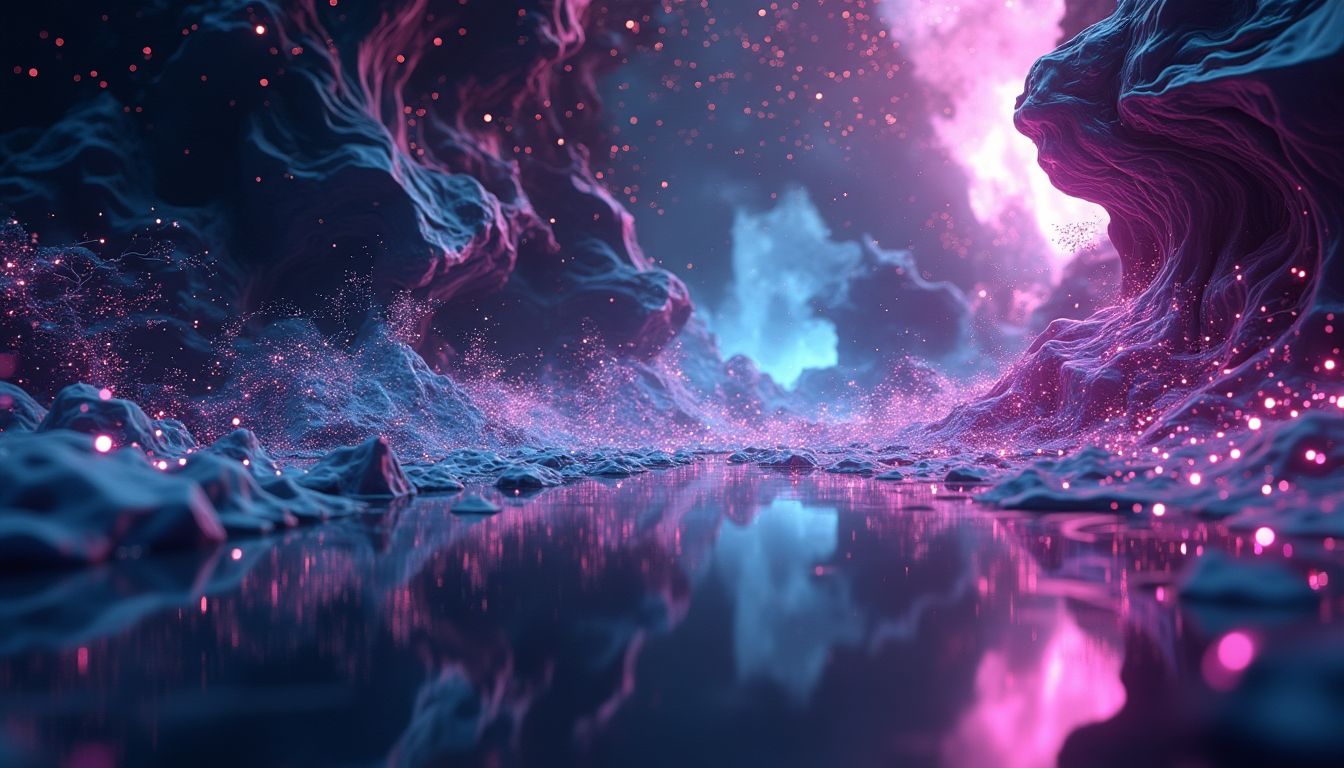
6. AI Solutions: How Would AI Tackle This Issue?
6.1 Step-by-Step AI Approach
To embark on unraveling the mysteries of the multiverse, AI needs a methodical, deliberate approach that leverages its unparalleled computational power. Below is a hypothetical breakdown of how a sophisticated AI system could chart this groundbreaking journey:
- Day 1: Compile existing quantum data repositories from institutions like CERN, Google Quantum AI, and IBM Quantum. Develop pipelines to ingest this data into AI frameworks.
- Week 1–Week 2: Assemble interdisciplinary teams of physicists from MIT, computer scientists from DeepMind, and data analysts from institutions like Caltech. Begin training unsupervised AI algorithms to recognize patterns in the noise of quantum datasets—looking for anomalies or trends that align with theoretical predictions for "timeline branching."
- Month 1: Deploy AI models specifically designed around reinforcement learning to simulate quantum events. Integrate real-time input from facilities equipped with the latest quantum computers like IBM Quantum System Two.
- Month 2: Begin statistical correlation testing: can the detected patterns point to events that suggest "unobservable universes" interfering with ours? This involves collaborative papers to validate AI findings using Bayesian probabilistic models.
- Month 3–Month 6: Build physical simulations in collaboration with NASA and other central space agencies. These systems would attempt to emulate known multiverse conditions from M-theory and record actionable data that AI can further refine.
- Year 1: Based on the cumulative findings, publish a landmark white paper on the "AI-Driven Multiverse Hypothesis." Solicit continuous funding for a dedicated laboratory to expand research efforts, involving cutting-edge experiments like "artificial wavefunction collapse detection" with AI in controlled environments.
6.2 Concrete Plan
While this timeline gives us an initial framework, actions must be concrete and targeted. Multiverse research demands diverse expertise, herculean computing power, and global political will. AI will serve as the connective tissue—a bridge between the theoretical physics of the multiverse and empirical, actionable science. The proposed steps to bring this to life include the following:
- Global Quantum Repository: Centralize repositories of quantum experimental results, accessible to AI developers. Institutions like MIT and Stanford can house and disseminate ongoing work.
- AI in Quantum Noise Analysis: Use unsupervised machine learning models to test whether quantum noise across systems (e.g., random vacuum energy) consistently matches predictions of "shadow" interferences from other dimensions.
- Time Branching Simulations: Partner with state-of-the-art facilities like Google Quantum AI to replicate branching outcomes from baseline wavefunction collapse.
- International Collaboration: Form alliances through organizations like the UNESCO to overcome geopolitical barriers and pool resources for this ultimate Moonshot 2.0.
6.3 Tentative "Actions Schedule"
Following in the spirit of ambitious endeavors like the Manhattan Project, here’s a tentative timeline for year one:
- Day 0: Register public-facing domain moonshot-project.com and establish subdomains for private collaboration and repository access.
- Day 1: Reach out to leaders in quantum physics, AI, and applied mathematics, such as Max Tegmark and DeepMind, to coalesce key contributors.
- Week 1: Convene the first roundtable in Brussels, ensuring neutral grounds for data-sharing agreements.
- Week 2: Deploy AI-specific hardware and processing clusters, pulling computational resources from OpenAI and Google. Begin initial tests on existing quantum data libraries.
- Month 1: Draft and finalize a multiverse white paper that outlines theoretical groundwork and AI’s potential role. Submit findings to journals like Nature or arXiv for peer feedback.
- Month 2: Launch pilot efforts in partnership with experimental facilities, utilizing controlled laboratory setups at Quantinuum and universities such as Cambridge.
- Month 3: Groundwork laid for dedicated "Multiverse Simulation Laboratory," based potentially at Caltech or an equivalent U.S.-based facility.
To Seek What Lies Beyond
As we leave the borders of our known universe to venture into the hypothetical realms of the multiverse, we find ourselves grappling with more than just science—it’s a quest that resonates with humanity’s relentless curiosity and ambition. The idea that artificial intelligence, a creation of our own ingenuity, might unlock pathways to parallel dimensions is thrilling—and a little terrifying. New realms, infinite possibilities, and branches of existence can shift the entire trajectory of civilization.
But here’s the crux of it all: Are we ready to explore these unknown, infinite realities when we’ve barely begun to understand our own? Could AI's capacity to map alternate dimensions redirect the course of human destiny? These are no longer just philosophical musings—they may soon be a matter of scientific observation and action.
What role will you play in this unfolding story? Will you stand on the sidelines, or will you help shape a future that may include discovering other iterations of ourselves? Share your thoughts in the comments below.
And don't forget—subscribe to our newsletter to join iNthacity, the "Shining City on the Web," for more thought-provoking explorations like these. Like, share, and join our growing community of dreamers and disruptors.
FAQ: Artificial Intelligence and the Multiverse Theory
1. What is the multiverse theory, and what are its origins?
The multiverse theory suggests that our universe is just one among countless others, each with potentially different laws of physics, events, and outcomes. It originates from theoretical physics and cosmology, with roots in ideas like the Many-Worlds Interpretation (MWI) of quantum mechanics and the theory of cosmic inflation. This concept gained visibility through the works of physicists like
Hugh Everett and Max Tegmark.
2. How does artificial intelligence relate to the multiverse theory?
Artificial intelligence (AI) can help decode complex quantum data, a key aspect of testing hypotheses related to parallel universes. AI’s pattern recognition capabilities allow it to identify anomalies in quantum entanglement, wave function collapses, and other phenomena that might offer evidence for alternate realities.
Companies like IBM and DeepMind are leaders in using AI to solve problems in quantum physics, pushing the boundaries of what we can analyze and interpret.
3. What is quantum mechanics, and how does it support the multiverse concept?
Quantum mechanics is a branch of physics that studies the behavior of particles at microscopic scales, where the rules of classical physics no longer apply. A central tenet of quantum mechanics is the idea of superposition, where particles exist in multiple states simultaneously until observed. The Many-Worlds Interpretation suggests that every quantum decision creates a new reality or "branch," forming a massive, interconnected web of alternate universes.
A famous analogy is Schrödinger’s Cat, where a cat in a sealed box is simultaneously alive and dead until the box is opened to observe the outcome. This peculiar paradox hints at the possibility of parallel outcomes existing simultaneously.
4. What challenges exist in interpreting quantum data for multiverse evidence?
Interpreting quantum data is profoundly complex due to the sheer volume and ambiguity of information. Current quantum computers like Google’s Sycamore and IBM’s Quantum System One are generating vast datasets that require advanced AI to interpret. Challenges include:
- The inability of traditional computing systems to process entangled states or wave functions at scale.
- Identifying meaningful patterns amidst quantum noise, which often lacks clear observational markers.
- Verifying whether AI-detected anomalies truly point to alternate realities or artifacts of measurement.
5. Has AI ever demonstrated success in related fields of physics?
Yes, AI has revolutionized numerous areas of physics and science. For example:
- AlphaFold, an AI created by DeepMind, cracked the decades-old problem of protein folding, mapping the structure of over 200 million proteins.
- AI tools have been used to detect gravitational waves collected by LIGO, identifying signals buried under massive noise datasets.
- AI-driven simulations have replicated conditions from the early universe, helping cosmologists understand Big Bang dynamics.
Given these breakthroughs, it's not far-fetched to believe AI could tackle the challenges of mapping the multiverse with similar success.
6. What experiments might AI perform to prove the existence of a multiverse?
AI could conduct various innovative experiments, including:
- Analyzing quantum noise for consistent patterns predicted by multiverse theory.
- Simulating "branching events" in quantum systems to predict alternate outcomes of decisions at microscopic scales.
- Using reinforcement learning to model interactions within higher-dimensional frameworks proposed by theories like
string theory.
Partnership with leading research labs like CERN or multidisciplinary projects such as MIT's AI Lab would be integral in verifying these approaches.
7. Why is proving the multiverse theory significant for humanity?
Proving the multiverse would revolutionize our understanding of reality, much like the shift from a geocentric to a heliocentric universe during the Copernican Revolution.
Implications include:
- Redefining philosophical ideas about free will, determinism, and choice.
- Inspiring breakthroughs in quantum technology, like ultra-secure encryption or exotic energy generation.
- Highlighting the fragility and interconnectivity of existence, fostering deeper empathy and wisdom.
The discovery of parallel realities could also redefine humanity’s collective ambitions, guiding us toward a more profound exploration of our place in the cosmos.
8. What ethical dilemmas might arise from confirming the multiverse exists?
The affirmation of parallel universes opens up several ethical and existential dilemmas:
- Could we be tempted to interfere with alternate realities? Should such interference be allowed?
- How would access to advanced knowledge or outcomes from parallel universes be ethically shared or restricted?
- What safeguards can prevent misuse of "multiverse technologies" for economic or geopolitical gain?
Institutions like the Stanford Encyclopedia of Philosophy and ethics think tanks will undoubtedly play a crucial role in shaping policy as we approach these uncharted territories.
9. Is the multiverse just science fiction, or grounded in science?
While the idea of the multiverse has featured heavily in science fiction—popularized by works like the Marvel Cinematic Universe
or the movie Everything Everywhere All At Once—its underlying concepts are grounded in science. From quantum mechanics to string theory and cosmic inflation, the multiverse theory represents a serious, albeit contested, avenue of scientific inquiry.
10. How can I stay informed about AI and quantum advancements?
You can keep up-to-date by subscribing to reputable sources such as:
Additionally, follow visionary organizations like NASA, OpenAI, and Caltech for the latest advancements.
Wait! There's more...check out our gripping short story that continues the journey: A Decision Made Twice
Disclaimer: This article may contain affiliate links. If you click on these links and make a purchase, we may receive a commission at no additional cost to you. Our recommendations and reviews are always independent and objective, aiming to provide you with the best information and resources.
Get Exclusive Stories, Photos, Art & Offers - Subscribe Today!
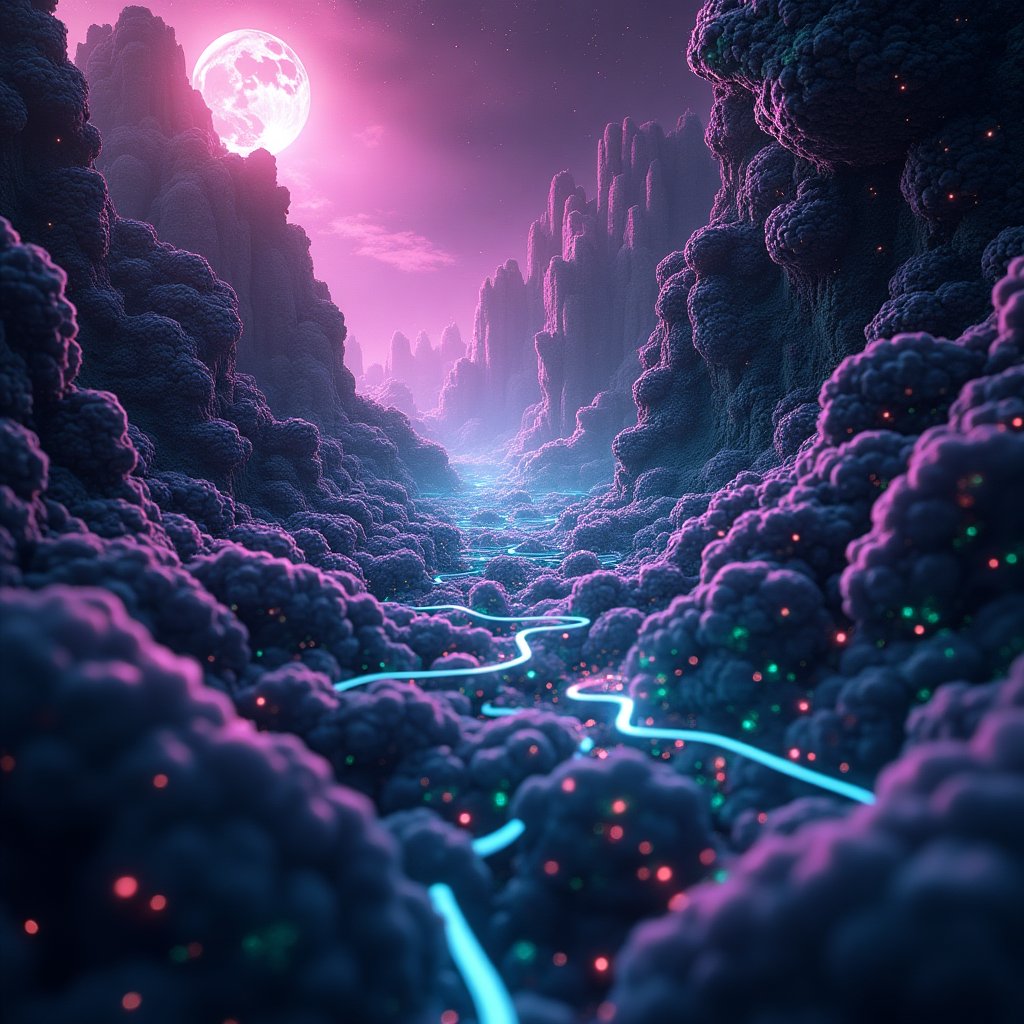
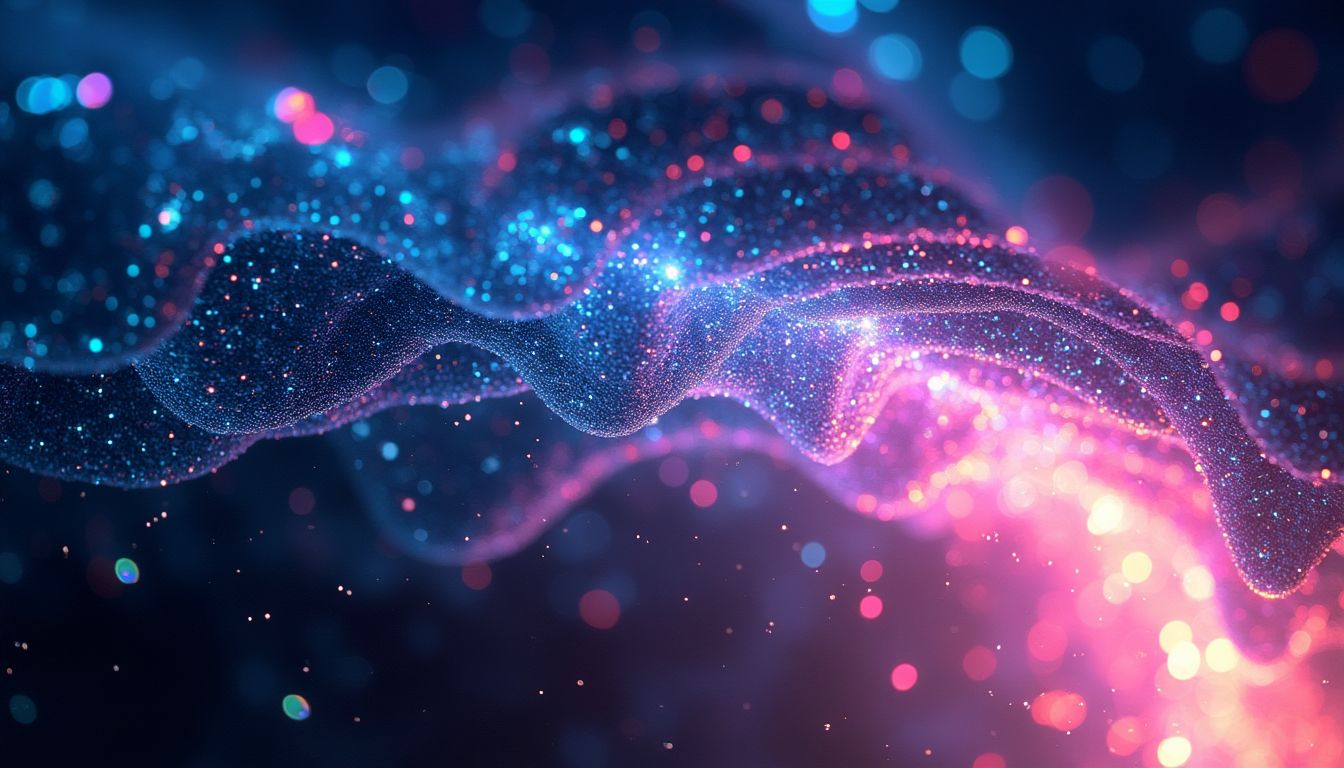
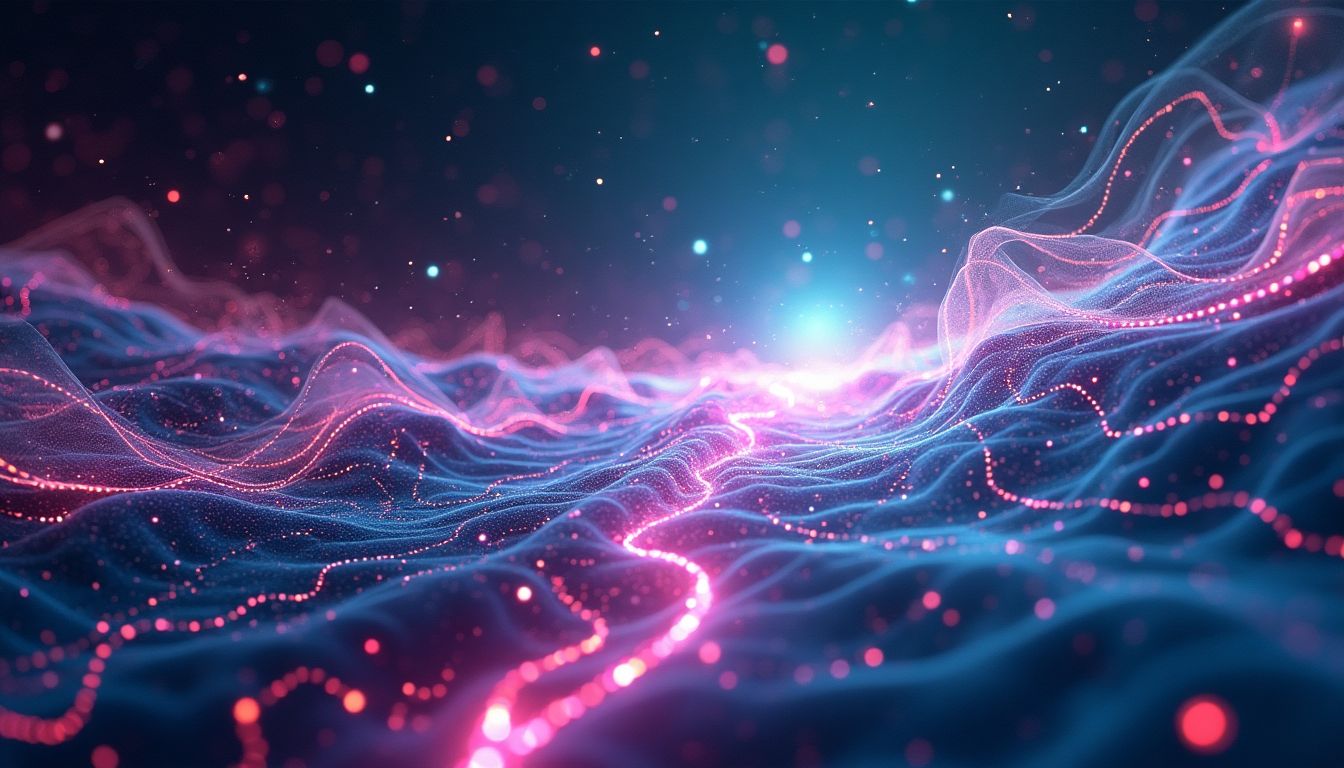
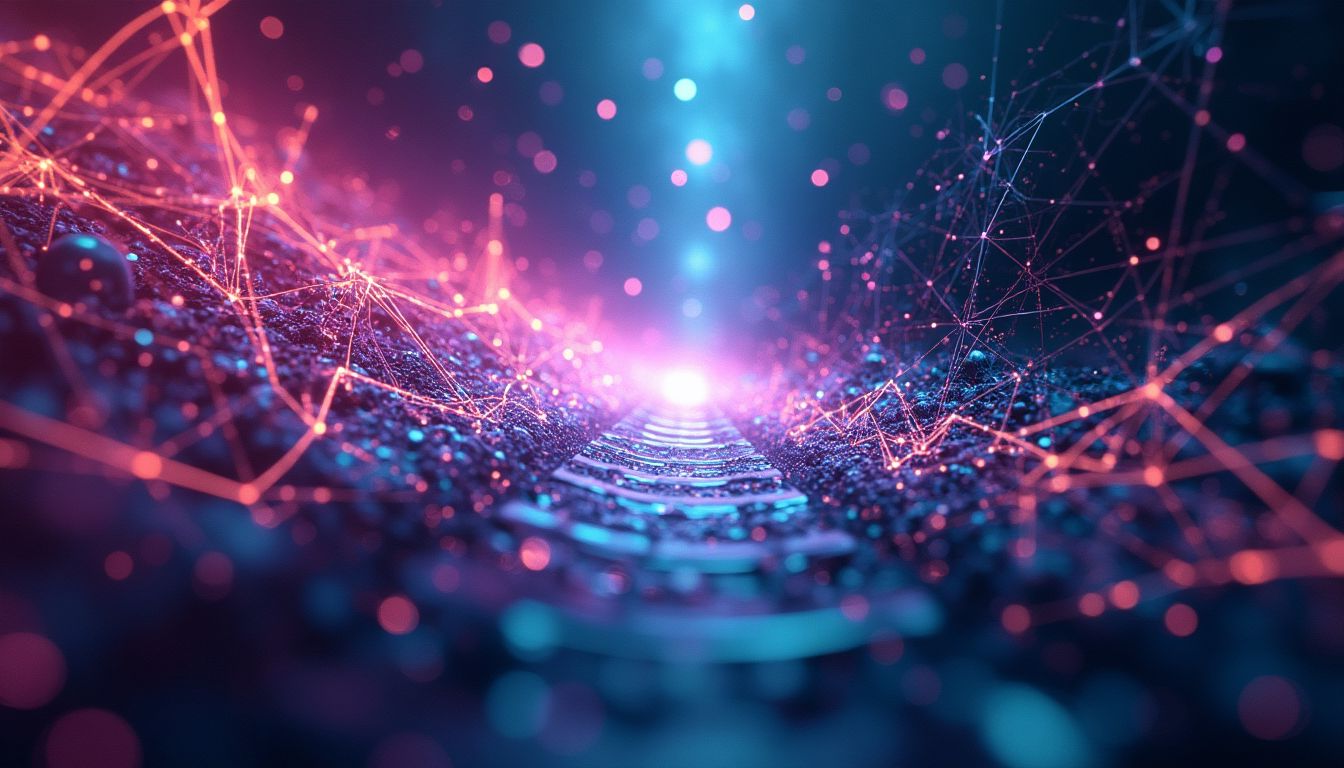

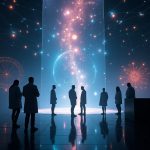





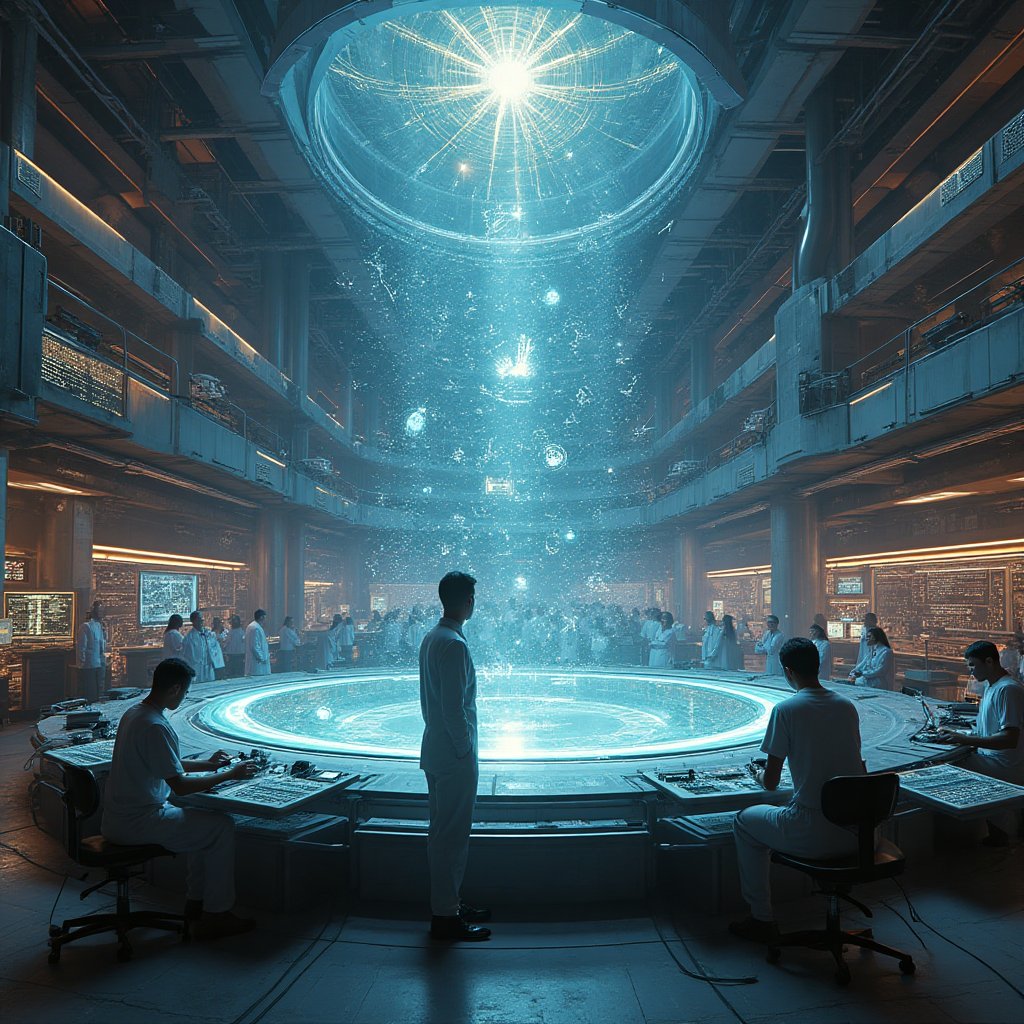
















1 comment